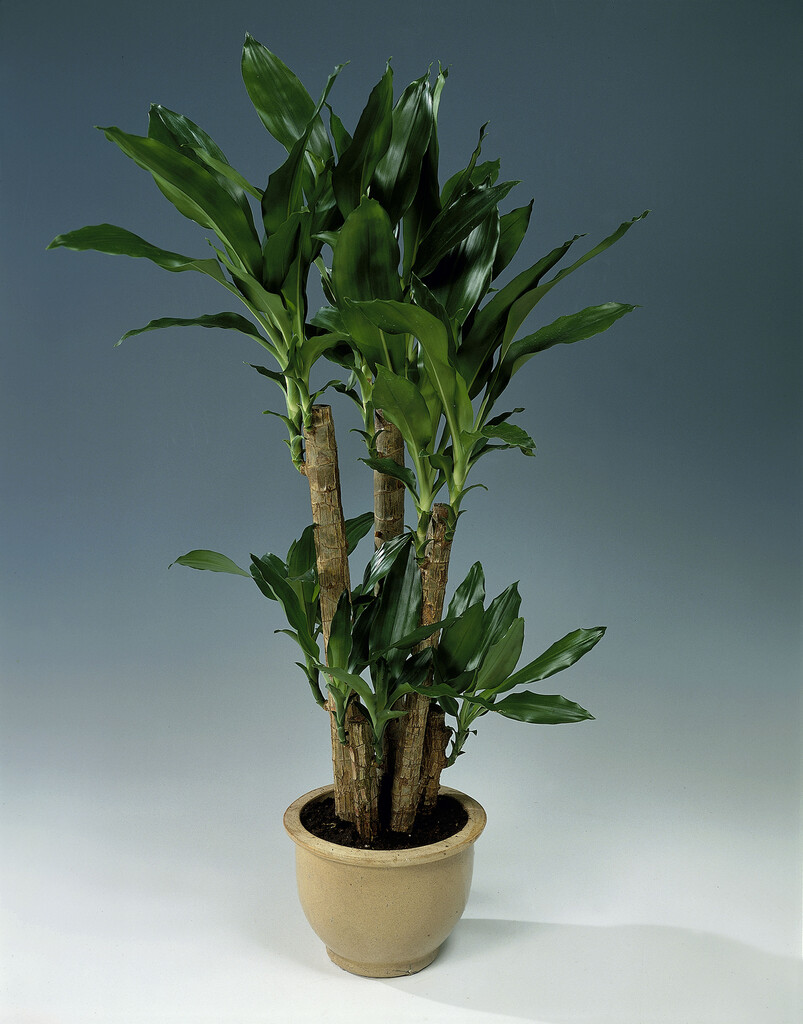Size
Ultimate height
1.5–2.5 metresTime to ultimate height
2–5 yearsUltimate spread
0.1–0.5 metresGrowing conditions
Moisture
Moist but well–drainedpH
Acid, Alkaline, NeutralColour & scent
| Stem | Flower | Foliage | Fruit | |
| Spring | Green | |||
|---|---|---|---|---|
| Summer | Green | |||
| Autumn | Green | |||
| Winter | Green |
Position
- Full sun
- Partial shade
Aspect
East–facing or South–facing or West–facing or North–facing
Exposure
Sheltered Hardiness
H1BBotanical details
- Family
- Asparagaceae
- Native to GB / Ireland
- No
- Foliage
- Evergreen
- Habit
- Columnar upright
- Potentially harmful
- Pets (dogs, cats, rabbits, rodents): Harmful if eaten. For further information and contact numbers regarding pets, see the HTA guide to potentially harmful plants
- Genus
Dracaena are evergreen trees, the few branches bearing linear to lance-shaped leaves often crowded towards the tips; on mature plants, small greenish-white flowers may be followed by orange or red berries
- Name status
Correct
- Plant range
- Tropical Africa
How to grow
Cultivation
Grow in peat-free, loam-based potting compost in full light with shade from hot sun. Water moderately in the growing season and apply a balanced liquid feed monthly; water sparingly in winter. Top dress or pot on in spring. See Dracaena for further advice
Propagation
Propagate by sowing seed at 20°C in spring; root semi-ripe cuttings and leafless stem sections with bottom heat in summer
Suggested planting locations and garden types
- Houseplants
- Low Maintenance
- Conservatory and greenhouse
Pruning
No pruning required, although weak stems may be shortened to 15cm in spring, and the resulting cutting used to propagate a new plant
Pests
May be susceptible to scale insects, glasshouse red spider mite, thrips and mealybugs
Diseases
Generally disease-free
Get involved
The Royal Horticultural Society is the UK’s leading gardening charity. We aim to enrich everyone’s life through plants, and make the UK a greener and more beautiful place.
